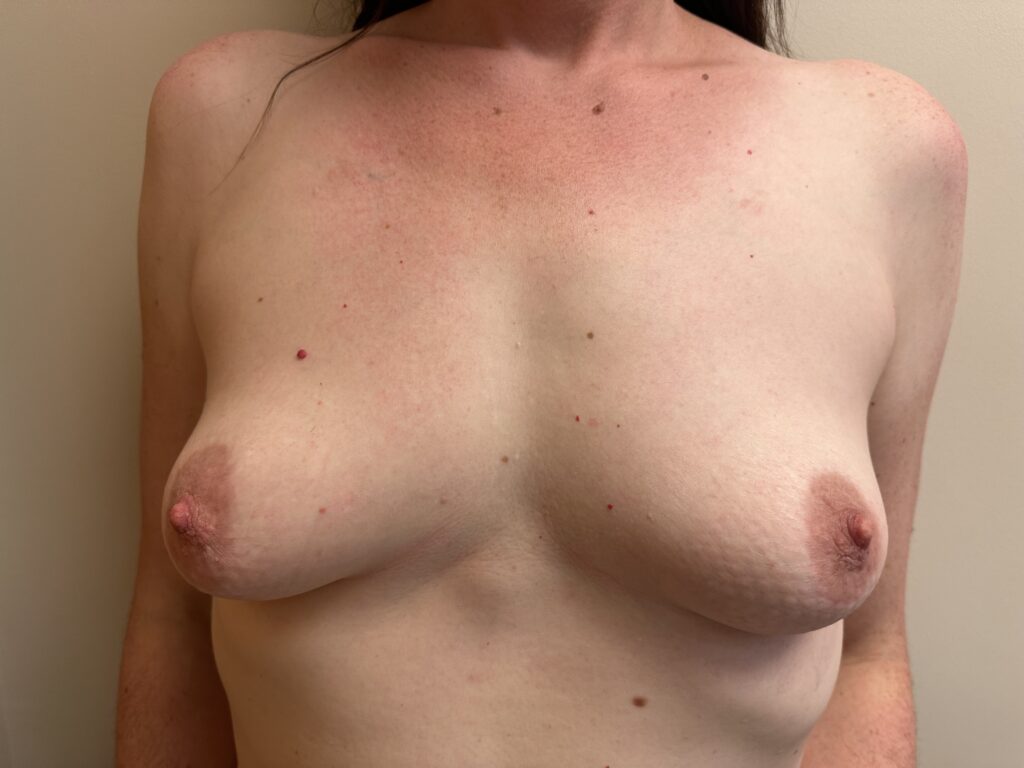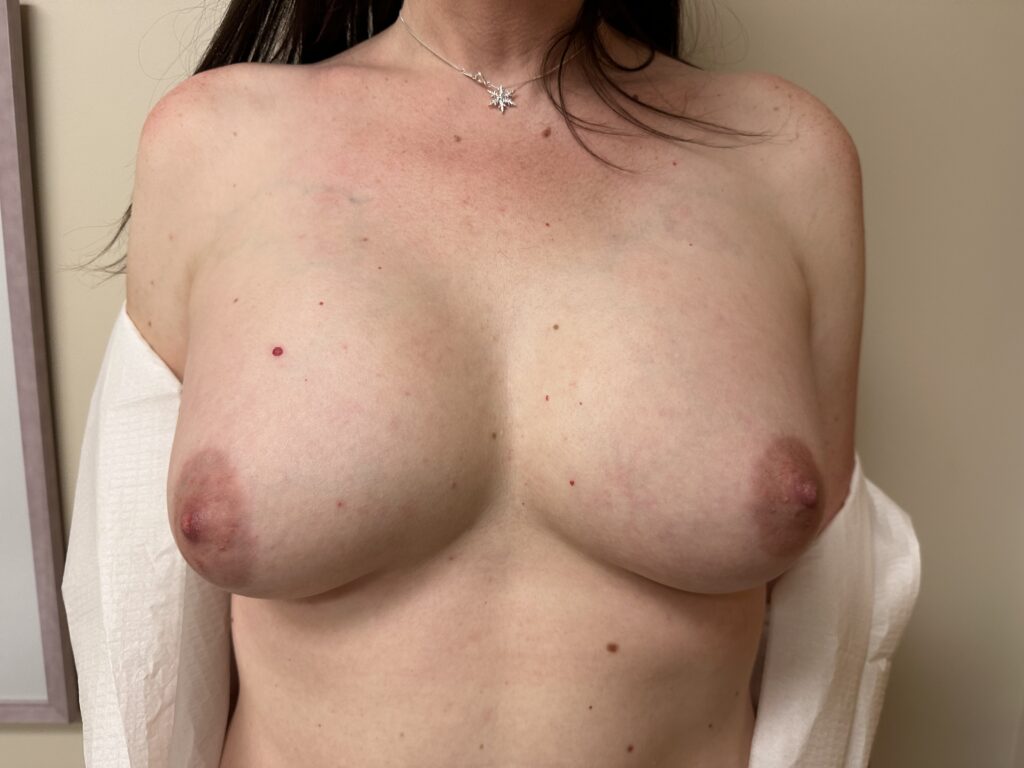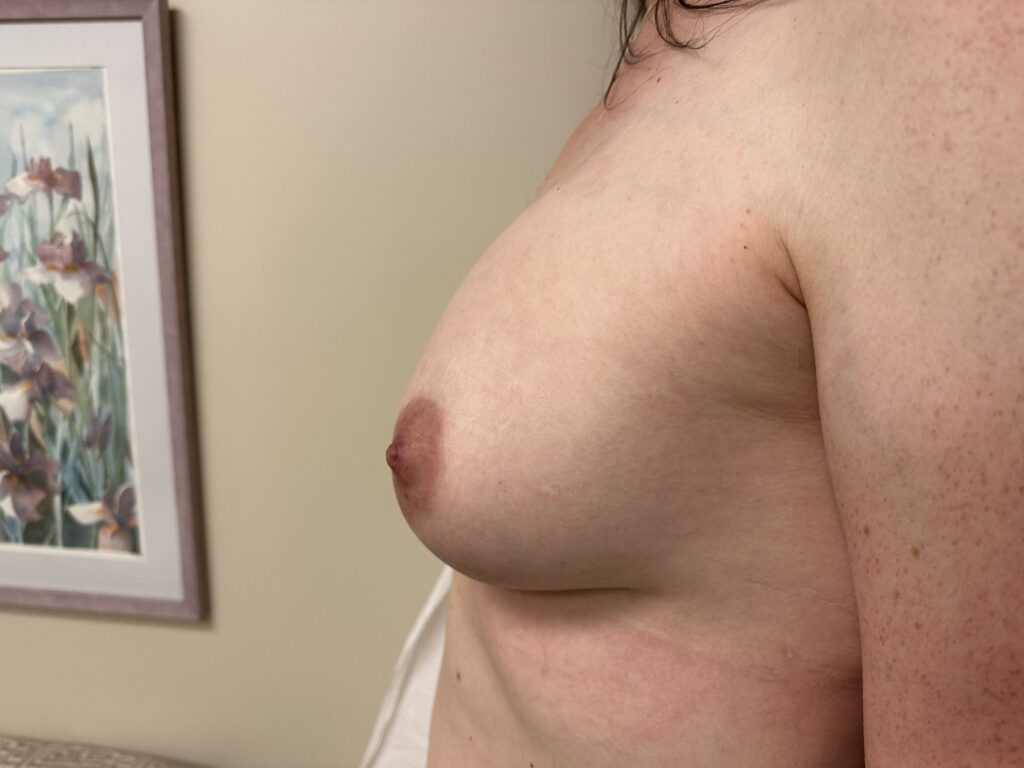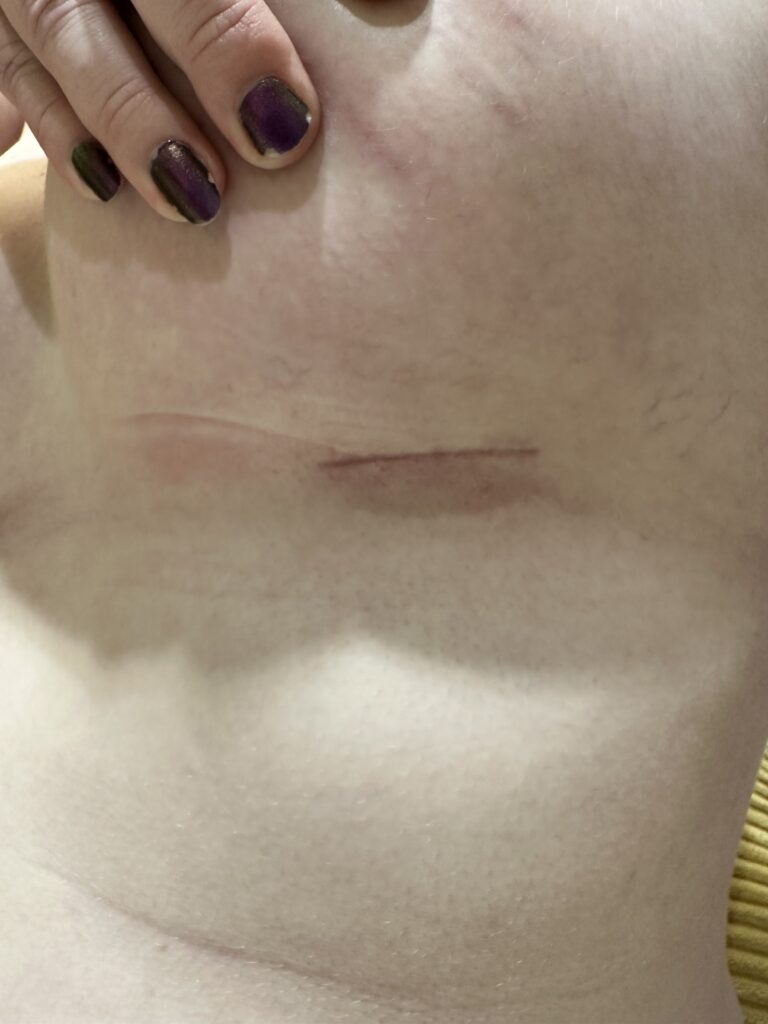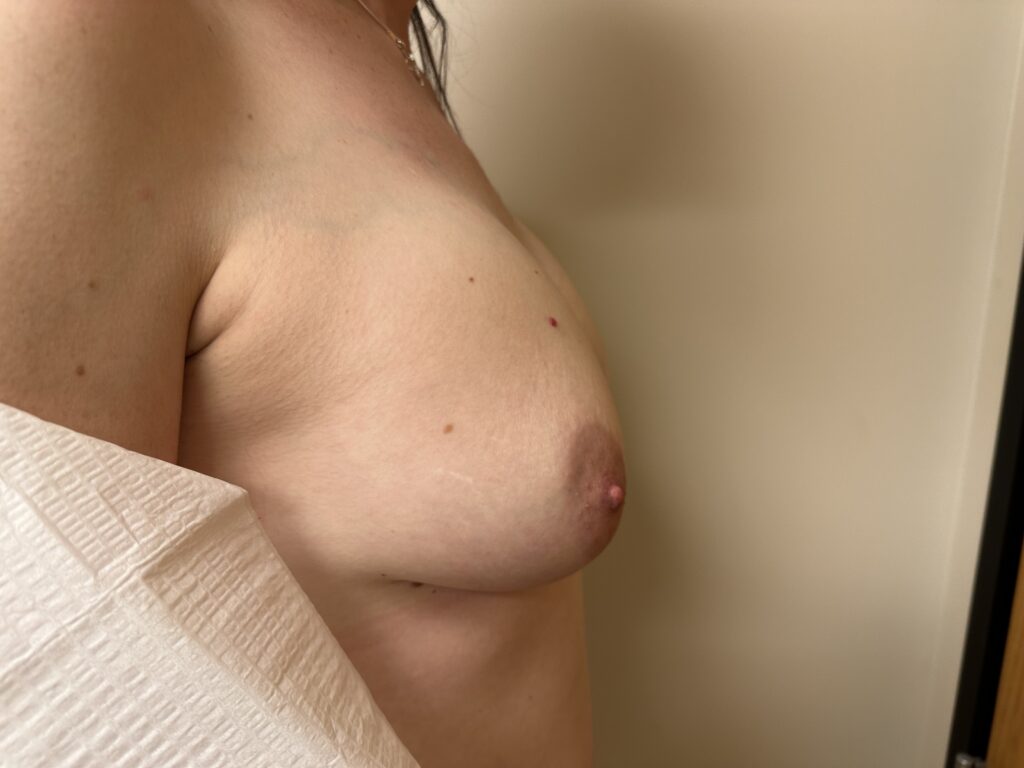
Breast Augmentation

Breast Augmentation Options
There are many techniques that are available and the names may be different from office or office. We will cover the most common techniques for breast augmentation.
Breast Augmentation with Fat Grafting
In this technique fat is taken from another part of the body usually the abdomen, flanks or thighs and placed into the breast. In this procedure about 60% of the fat survives and becomes part of your body that will change with fluctuations in weight. We are limited by the amount of fat that can be placed during each session therefore multiple sessions are usually needed to get results similar to implants-based augmentation. Minimum of 3 months needed between each surgical session to allow body to heal from surgery.
Ideal candidate: Someone at a stable weight with areas with enough fat for harvest.
Benefits:
• Your own tissue after initial surgery or surgeries no maintenance
• Does not have any of the risks of breast implants
• Added body contouring to other parts of your body usually abdomen/flanks included
Disadvantages:
• Multiple rounds of surgery needed to get similar results to breast implants
• Not a great option for thin patients looking to be very full
• Two surgical sites to heal from
Breast Augmentation with Implant
This is by far the most common technique for breast augmentation. This is a powerful surgery that immediately increases the volume of the breasts.
Saline Implant
Silicone shell that is filled with saline which is a salt water that is used for IV fluids.
Benefits:
• If the implant ruptures you will know because the body will absorb the fluid from inside the implant and you will notice a drop in volume.
• Can potentially be placed through a slightly smaller incision.
Disadvantages:
• If the implant ruptures you will know because the body will absorb the fluid from inside the implant and you will notice a drop in volume.
• Can have more rippling
• Does not feel similar to breast tissue
Silicone Implant
Silicone shell that is filled with cohesive silicone gel. This is the most common augmentation method.
Benefits:
• If the implant ruptures you will not lose volume
• Feels more like breast tissue
• Less rippling
Disadvantages:
• Silent rupture
Surgical approach: In chest that have bene touched by estrogen later in life it is common to need to adjust the native breast fold to a lower position in order to give good balance to the chest. This is best accomplished through an incision on the breast fold. This is well hidden by the breast and usually ends up very close to the new breast fold location.
Above or Below the Muscle?
This can vary from person to person. As a rule of thumb typically an implant is best placed above the muscle. If placed under the muscle you may develop an animation deformity where the implant will move whenever you use your pectoralis muscles. This can be unnatural and bothersome to some patients. However, in very thin patients putting the implant under the muscle can give more coverage of the implant and make the potential for visible rippling of the implant less apparent.
After Care
Healing from Breast Implants
When you wake up from surgery you will have a soft surgical bra. You should wear this bra or if you choose a soft surgical bra at all times when not showering for the first 3 months. For the first 2 weeks it is important to not do large movements, reaching, or lifting with the arms. Loving called the T-rex arms you can take care of daily hygiene, eating, texting but not much more. This allows the breast pocket to form around the implant and make sure that the implant does not migrate out of the pocket. After this two weeks can start to do daily activities as tolerated. No vigorous exercise until after 6 weeks.
Implants will start as more mound like or stuck on appearance and will take about 3 months until they settle into their final tear drop shape.
After 3 months you can wear any bra of your choosing.
Long Term Complication
Capsular contracture
This is when the scar around the implant begins to contract or squeeze the implant changing the shape and position of the implant and can even become painful overtime. This is not a dangerous or life threatening condition
• This can happen weeks to years after breast augmentation and is the most common reason for revision surgery
• Surgery can treat this but is more common to return if you have had it once.
Breast implant illness
Rare non-descript illness with symptoms may include fatigue, joint pain, brain fog, dry eyes and many other health concerns.
Anaplastic large cell lymphoma
Extremely rare lymphoma associated with textured implants. We do not use textured implants in our practice.
Recommended that implants be replaced every 10 years, however many will wait until there is an issue with the implant before having any additional surgery. It is also recommended to get breast after 5 years and every 3 years after to evaluate implants for rupture. This is often not covered by insurance. We will discuss this in more detail at your consultation.
Healing from Fat grafting
When you wake up from surgery you will have a soft surgical bra and an abdominal binder. You should wear this bra or if you choose a soft surgical bra at all times when not showering for the first 3 months. Where the abdominal binder at all times when not showering to 2-3 months. Do not sleep on stomach or side for about 6 weeks. No vigorous exercise until after 4-6 weeks. Numbness, tingling, bruising, swelling, lumpiness are all normal part of the healing process this typically resolves over 3 months.
